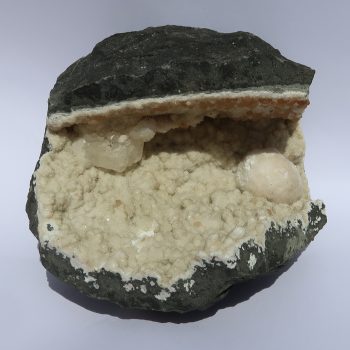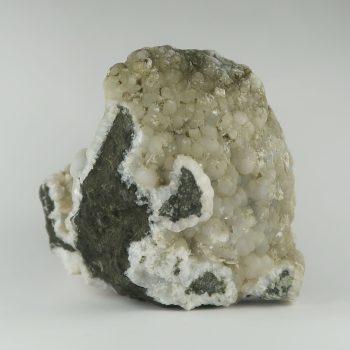Gyrolite
Gyrolite is typically found in spherical or radial formations, and is prized by mineral collectors for its unusual shape. It is often found in basalt voids, alongside zeolite minerals.
Showing all 2 results
Information about Gyrolite
Appearance
Gyrolite is typically found in spherical or radial formations, alongside zeolite minerals including apophyllite and okenite. It looks a little like a solid okenite, I suppose.
Uses and History
Gyrolite has no commercial or industrial uses, but is prized by mineral collectors due to its interesting formations, typically trapped in voids in basalt – a nice contrast to the mineral itself.
First described in 1851 at The Storr, on the Isle of Skye, Scotland. It was named from the ancient Greek word ‘guros’, meaning circle – as the mineral typically occurs in spherules and radial forms.
Mineralogy
White, brown, grey, green
Hazards and Warnings
Mineral collectors should wash their hands after handling specimens, to avoid any exposure to potential toxins.
Almost all rocks, minerals (and, frankly, almost all other substances on earth) can produce toxic dust when cutting, which can cause serious respiratory conditions including silicosis. When cutting or polishing rocks, minerals, shells, etc, all work should be done wet to minimise the dust, and a suitable respirator or extraction system should be used.
Translations
Arabic:
Hindi:
Portuguese:
Bengali:
Indonesian:
Punjabi:
English:
- gyrolite
Italian:
Russian:
- Гиролит
French:
Japanese:
Spanish:
- gyrolita
German:
- Gyrolit
Korean:
Thai:
Gujurati:
Mandarin Chinese:
Urdu:


